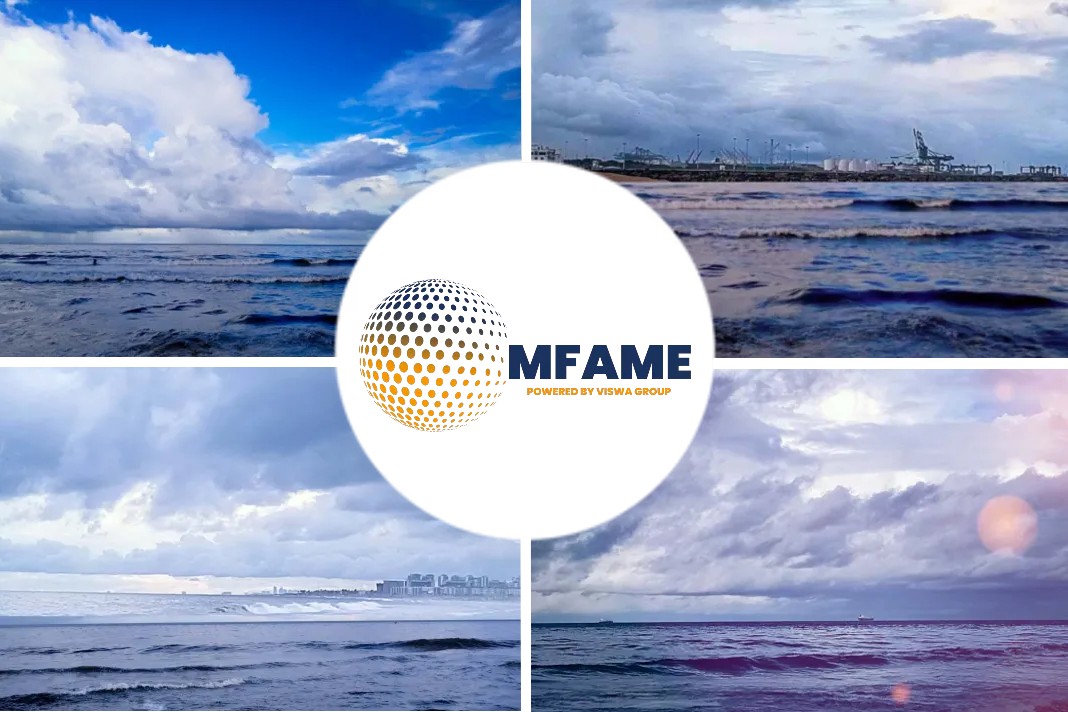
- However, a NATO official, who did not have permission to speak publicly, confirmed that NATO had received SpaceKnow’s data and said satellite imagery can prove useful for its investigations.
- The company analyzes images from multiple satellite systems—including paid and free services—and uses machine learning to detect objects within them.
- In total, 23 of these vessels had their automatic identification system (AIS) transponders turned on.
Prior to the alleged sabotage in September, satellite monitors found two vessels in the vicinity of the pipeline with their trackers switched off as reported by Wired.
Suspected sabotage
The first gas leaks on the Nord Stream 2 pipeline in the Baltic Sea were detected in the early hours of September 26, pouring up to 400,000 tons of methane into the atmosphere.
Officials immediately suspected sabotage of the international pipeline.
A new analysis seen by WIRED shows that two large ships, with their trackers off, appeared around the leak sites in the days immediately before they were detected.
“We have detected some dark ships, meaning vessels that were of significant size, that was passing through that area of interest,” says Jerry Javornicky, the CEO and co-founder of SpaceKnow.
Javornicky says NATO officials asked the company to provide more information.
Detecting objects
NATO spokesperson Oana Lungescu says it does not comment on the “details of our support or the sources used” but confirmed that NATO believes the incident was a “deliberate and irresponsible act of sabotage” and it has increased its presence in the Baltic and North Seas.
The company analyzes images from multiple satellite systems—including paid and free services—and uses machine learning to detect objects within them.
The smallest of these, around 400 square meters, covered the immediate blast area, and larger areas of interest covered several kilometres.
In the weeks leading up to the explosions, SpaceKnow detected 25 ships passing through the region, from “cargo ships to multipurpose larger ships,” Javornicky says.
In total, 23 of these vessels had their automatic identification system (AIS) transponders turned on.
When turned on, AIS will broadcast a ship’s name, location, direction of travel, speed, and other information.
Military mission
It is relatively rare for ships to turn off their AIS transponders.
“It would not be common practice [to have AIS turned off] unless the vessels have a classified military mission or they would have some clandestine objectives because the Baltic Sea is one of the busiest seas in the world in terms of commercial traffic,” says Otto Tabuns, the director of the Baltic Security Foundation, an NGO that focuses on the region.
Collisions at sea can be deadly and environmentally ruinous.
“There are many places in the [Baltic] sea that are not navigable for bigger ships,” Tabuns says.
Decades-old wartime submarines and munitions litter the Baltic Sea’s floor.
Most satellites observing Earth take photos of what’s beneath them; others, however, also use SAR to bounce radio waves off the ground and create images from them.
Investigating explosions
Kurekin says SAR images can be used to identify the longitude and latitude coordinates of a ship, the direction it is heading, and potentially to estimate its speed.
The images are less impacted by the weather and can also provide visibility at night.
“It’s quite difficult to hide a ship from a SAR sensor,” Kurekin adds.
SAR images of the dark ships shared with WIRED show the vessels as glowing objects, not far from the explosion site around Nord Stream 2.
He says the company is not in the business of determining what may have happened or who is responsible but instead provided the data to authorities.
The signal from AIS could stop communicating with satellites or receivers on land, Kurekin says, adding that the signal can also be impacted by the weather.
While there are multiple ongoing investigations into the explosions, determining the full picture of what happened may take some time. Police in Copenhagen said its initial investigations have determined that “powerful explosions” caused “extensive damage” to the pipes. Images taken from around the exploded sections of the pipe appear to show that at least 50 meters of the pipeline were destroyed in the explosions.
Seizures during investigation
In an email, the Swedish security service, Säkerhetspolisen, said that due to “secrecy” around its operations, it could not discuss its investigation or whether it was looking at satellite data.
“Certain seizures were made during the onsite investigations that are being analyzed,” Wernstedt says.
However, while the investigations are ongoing, there appear to be difficulties between the countries that are looking into the incident, which could slow the process.
While Sweden says it is working with investigators in Germany and Denmark, the official leading its investigation has rejected plans to form a joint investigation.
Tabuns says he hopes that the incident will act as motivation for countries to work on better ways to share intelligence, particularly as Sweden and Finland apply to join NATO.
Did you subscribe to our newsletter?
It’s free! Click here to subscribe!
Source: Wired























